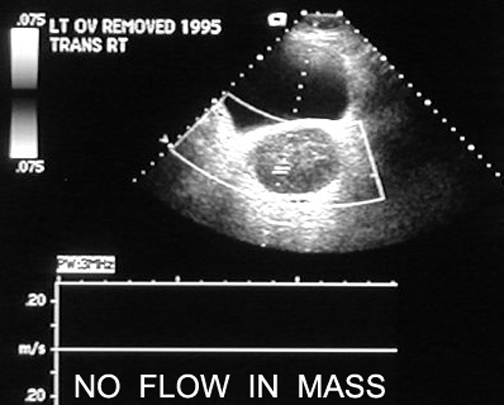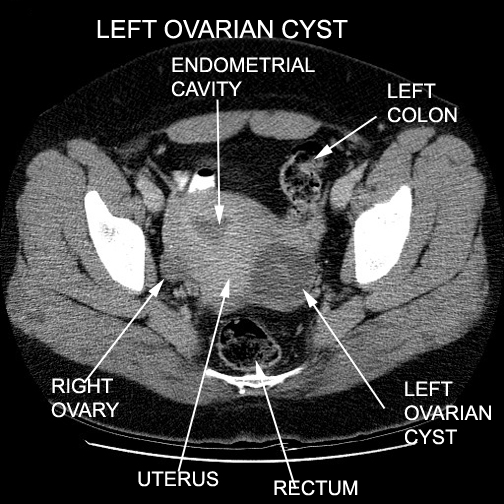Any solid component on the ultrasound is a possible feature of malignancy.
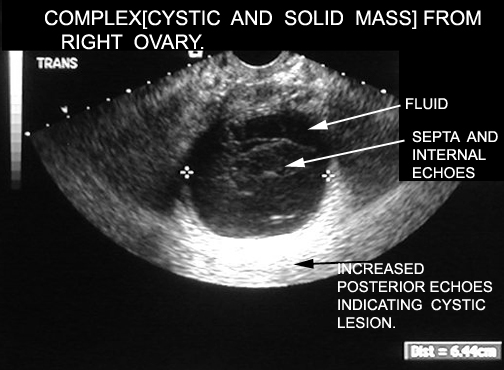
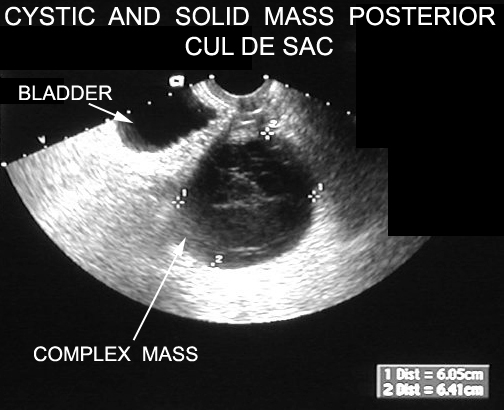
The other characteristics that are associated with malignancy are septations.
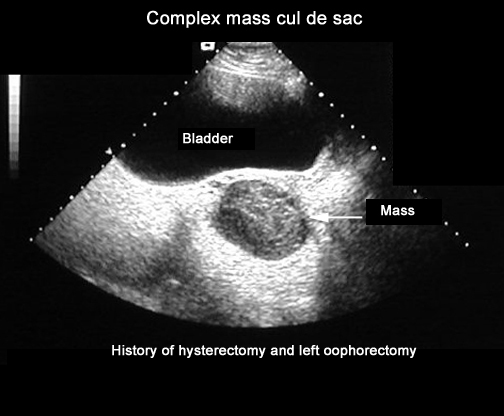
Doppler also improves the specificity of ultrasound.
Malignant masses are more likely to have detectable flow and flow that is centrally located.
